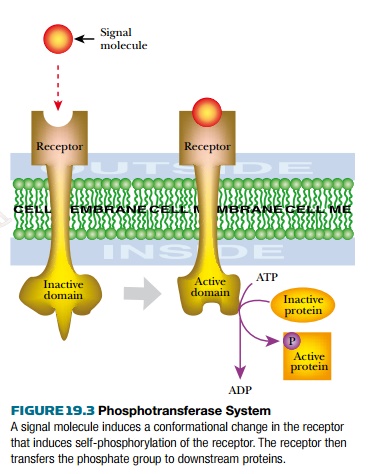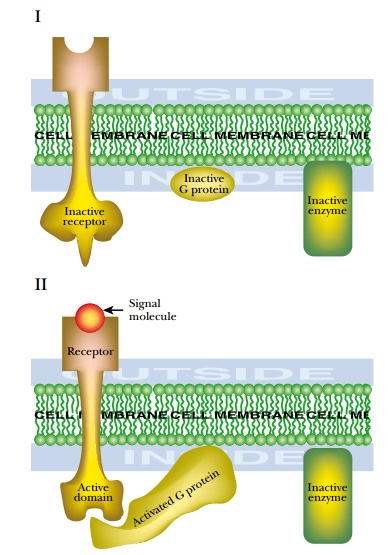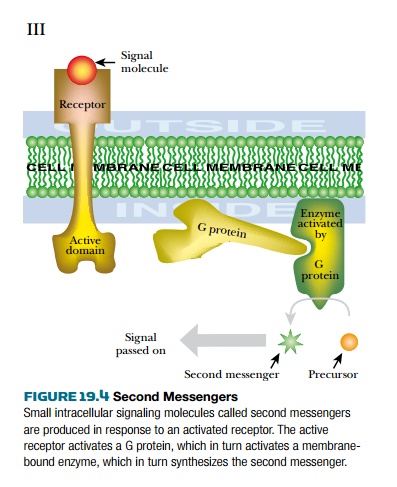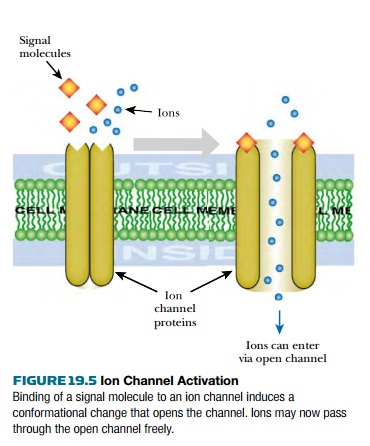Chapter: Biotechnology Applying the Genetic Revolution: Noninfectious Diseases
Noninfectious Diseases: Receptors and Signal Transmission
RECEPTORS AND SIGNAL TRANSMISSION
A wide variety of molecules
are used in signaling, but in all cases the recipient cell needs a receptor .
Usually the receptor is a protein situated in the cytoplasmic membrane with the
site for binding the messenger facing the outside. When a signal molecule
appears, it binds to the receptor causing a conformational change. The receptor
then passes the signal on to other proteins, known generally as signal transmission
proteins . Both receptors and signal transmission proteins often dimerize or
dissociate during the process of signal transmission. There are three main types
of signal transmissions.

(a) Phosphotransferase systems . Activation of the receptor causes the
phosphorylation of signal transmission proteins ( Fig. 19.3 ). Protein kinases transfer
phosphate groups from ATP to other proteins. The activated receptor may act as
a protein kinase itself, or it may bind to and activate a separateprotein
kinase. Often several proteins take part in aphosphotransfer cascade that
allows the signal to be amplified or modulated in a variety of ways.


(b) Second messengers . Activation of the receptor results in
synthesis of a small intracellular signal molecule known as the second messenger
( Fig. 19.4 ). This may directly activate or inhibit various enzymes and may also
enter the nucleus and affect gene expression. Often a GTP-binding G protein links
the receptor to the enzyme that makes the second messenger.
(c) Ion channel activation. In this case,
the receptor itself acts as an ion channel ( Fig. 19.5 ). On receiving the
external message it either opens or closes. The altered movement of ions
through the channel then mediates further signaling.

Related Topics